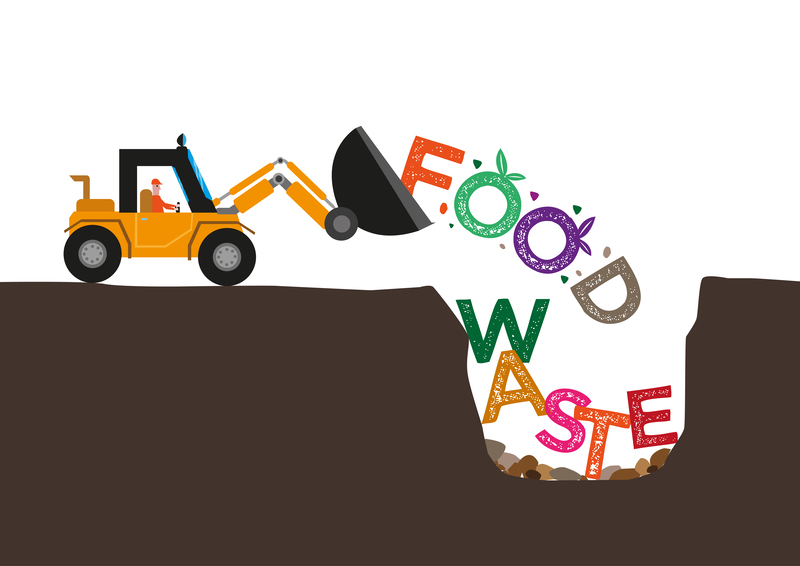Ensuring Proper PPE Waste Disposal in Your Community: A Comprehensive Guide
In the wake of global health challenges and increased adoption of personal protective equipment (PPE), proper disposal of used masks, gloves, and other gear is crucial. Improper disposal has significant health and environmental consequences. This article explains practical ways to promote proper PPE waste management in your community, from education to infrastructure, offering a thorough guide for residents, businesses, and local governments.

Understanding PPE Waste: What Counts and Why It's a Concern
What Is PPE Waste?
PPE waste includes single-use items like masks, gloves, face shields, gowns, and shoe covers commonly used in healthcare, workplaces, and everyday public spaces. As millions rely on PPE for protection against infectious diseases and hazardous materials, their disposal becomes a big challenge.
The Environmental and Health Impact of Improper PPE Disposal
- Health Risks: Used PPE may be contaminated, posing transmission risks to waste handlers and the general public if not managed properly.
- Environmental Hazards: Most PPE is made from non-biodegradable plastics. Discarded items litter public spaces, clog water systems, and threaten wildlife.
- Long-Term Pollution: PPE materials can take hundreds of years to decompose, potentially releasing microplastics and toxins into ecosystems.
The Need for Proper PPE Waste Management in Your Community
Communities play a vital role in PPE waste disposal management. Empowering residents with the right information and resources can significantly reduce the negative impact of PPE on public health and the environment. Proper programs also safeguard waste workers and align with local regulations.
Key Principles of Community PPE Waste Disposal
- Segregation at Source: Separate PPE from regular household waste to minimize contamination and facilitate safe treatment.
- Safe Collection: Ensure designated bins and proper handling protocols to protect waste handlers.
- Appropriate Treatment: Use incineration, autoclaving, or approved disposal methods for hazardous medical wastes.
- Public Awareness: Engage community members through educational campaigns and visible signage.
Best Practices for Proper PPE Disposal at Home
Individuals are the first line of defense in the safe PPE waste management chain. Here are practical steps for responsible disposal at home:
Step-by-Step PPE Disposal Procedure
- Remove PPE Carefully: Avoid touching the outside of used masks or gloves. Remove them following recommended procedures to avoid self-contamination.
- Bag It: Place used PPE in a dedicated, leak-proof plastic bag. Avoid mixing it with recyclable materials.
- Seal the Bag: Tie the bag securely. If possible, double-bag for added safety.
- Label If Necessary: For symptomatic individuals or if local guidelines require, label the bag as infectious waste.
- Dispose in Designated Bin: Use community-advised disposal bins or follow municipal protocols.
- Practice Hand Hygiene: Wash your hands thoroughly after disposing of PPE.
Never discard PPE waste in open areas, public streets, or regular recycling bins. This not only poses health risks but also complicates general waste management.
Community Initiatives for Effective PPE Waste Management
1. Installation of Dedicated PPE Waste Bins
Communities and local governments should install clearly labeled PPE waste bins at high-traffic locations such as markets, transport hubs, offices, and entrances to public buildings. These bins should be:
- Resistant to leaks and tampering
- Frequently emptied and sanitized
- Equipped with educational signage on correct usage
2. Public Awareness and Education Programs
Well-informed residents are key to proper PPE waste management. Organize workshops, webinars, and leafleting campaigns to educate the public about:
- The dangers of improper PPE disposal
- Safe handling and disposal steps
- Locations of designated PPE waste bins
Use multiple channels: local radio, social media, schools, and volunteer groups, to reach diverse demographics.
3. Partnerships with Waste Collection Services
Encourage collaborations between local authorities, private waste collectors, and health departments. These partnerships can:
- Streamline collection schedules for PPE waste
- Ensure correct protocols for transportation and treatment
- Facilitate staff training and the provision of protective gear for workers
4. Regulatory Measures and Policy Development
Clear policies and regulations around PPE waste disposal help standardize practices. Local governments can:
- Mandate segregation and provide guidelines for residents and businesses
- Implement fines for improper disposal
- Support the establishment of PPE-specific waste treatment facilities
5. Promoting Reusable PPE Where Safe and Appropriate
Encourage the use of certified reusable masks and gowns in low-risk settings. This can significantly reduce the burden of single-use PPE waste, provided people follow recommended cleaning and maintenance procedures.
PPE Waste Disposal in Healthcare and Business Settings
The Unique Challenges
Healthcare environments and essential businesses produce large volumes of potentially hazardous PPE waste, including:
- Single-use gloves, masks, face shields, and gowns
- Packaging for PPE items
Best Practices for Institutional PPE Disposal
Proper management includes:
- Designating Color-Coded Bins: Differentiate between infectious PPE waste and other materials.
- Training Staff: Regularly educate medical and cleaning staff on correct procedures.
- Safe Storage: Store collected waste in secure areas away from the public until disposal.
- Prompt Collection: Arrange frequent waste pick-up by licensed providers.
- Legal Compliance: Adhere to local and national regulations for hazardous waste.
Innovative Solutions for PPE Waste Reduction
1. PPE Waste-to-Energy Initiatives
Some communities are exploring incineration technologies that not only dispose of PPE safely but also convert waste into usable energy. While not universally available, supporting such innovations can be part of a sustainable PPE waste management strategy.
2. Development of Biodegradable PPE
Support and promote the adoption of new eco-friendly PPE designs, made from biodegradable materials. Community awareness helps drive demand for these greener alternatives.
3. Collection Drives and Take-Back Programs
Organizing community events for PPE waste collection can raise awareness and ensure bulk disposal is handled by certified agencies. Businesses can also partner in take-back programs for used masks and gloves.
Legal Responsibilities and Compliance in PPE Waste Disposal
Understanding Local Regulations
Familiarize yourself with municipal and regional laws regarding PPE waste. These may include guidelines for:
- Segregation and labeling of medical waste
- Designated dumping or treatment sites
- Penalties for non-compliance
Reporting and Community Monitoring
Citizens have a role in reporting improper PPE disposal. Establish community hotlines or online platforms to encourage reporting of littered PPE or improperly managed waste.
Frequently Asked Questions About PPE Waste Disposal
-
Can PPE be recycled?
Most single-use PPE (like masks and gloves) cannot be recycled through regular systems due to contamination and material composition. -
What should I do if I see PPE waste on the street?
Use gloves or tongs to safely collect the waste and dispose of it in a dedicated bin. Wash your hands thoroughly afterward. -
How can schools contribute to proper PPE disposal?
Educate students, install labeled bins, and encourage responsibility among staff and parents. -
Are biodegradable PPE products available?
Yes, but availability may vary by region. Encourage their use where possible to help minimize plastic pollution.
Action Plan: How to Start a Proper PPE Waste Management Program in Your Community
- Assess community needs by surveying residents and mapping high-use areas.
- Partner with local authorities for funding, logistics, and regulation enforcement.
- Raise public awareness via local media, workshops, and events.
- Install and maintain PPE-specific bins in strategic locations.
- Organize regular collection and safe disposal days, especially in high-density zones.
- Monitor program success through community feedback and regular site inspections.

The Role of Individual Action in PPE Waste Solutions
While systemic solutions are key, every individual can contribute to proper PPE waste management by:
- Disposing used items responsibly and encouraging others to do the same
- Sharing information and dispelling myths about PPE waste
- Supporting policies and participating in community programs
Small actions multiplied across a community lead to significant positive changes in environmental health and safety.
Conclusion: Building a Safer, Cleaner Community Through Proper PPE Waste Disposal
PPE waste disposal in your community is not just a necessity for public health, but a vital component in protecting the environment and ensuring sustainable living. By implementing clear protocols, investing in education, and fostering participation, local communities can turn a global challenge into an opportunity for greater resilience and safety. Let's work together to keep our surroundings clean, our public spaces safe, and our future bright.
Remember: Effective PPE waste disposal benefits everyone. Be proactive, stay informed, and ensure your community sets an example in responsible environmental stewardship.